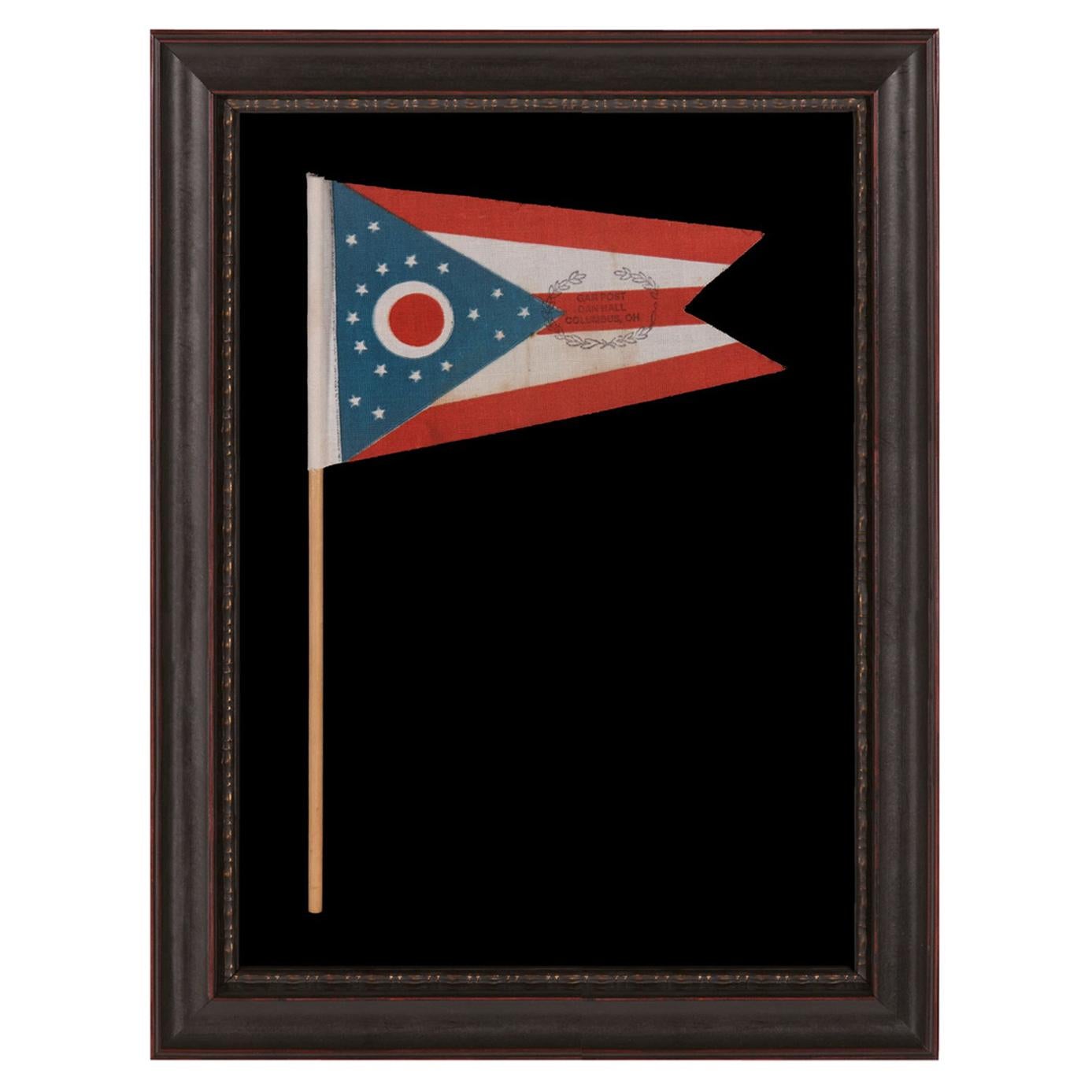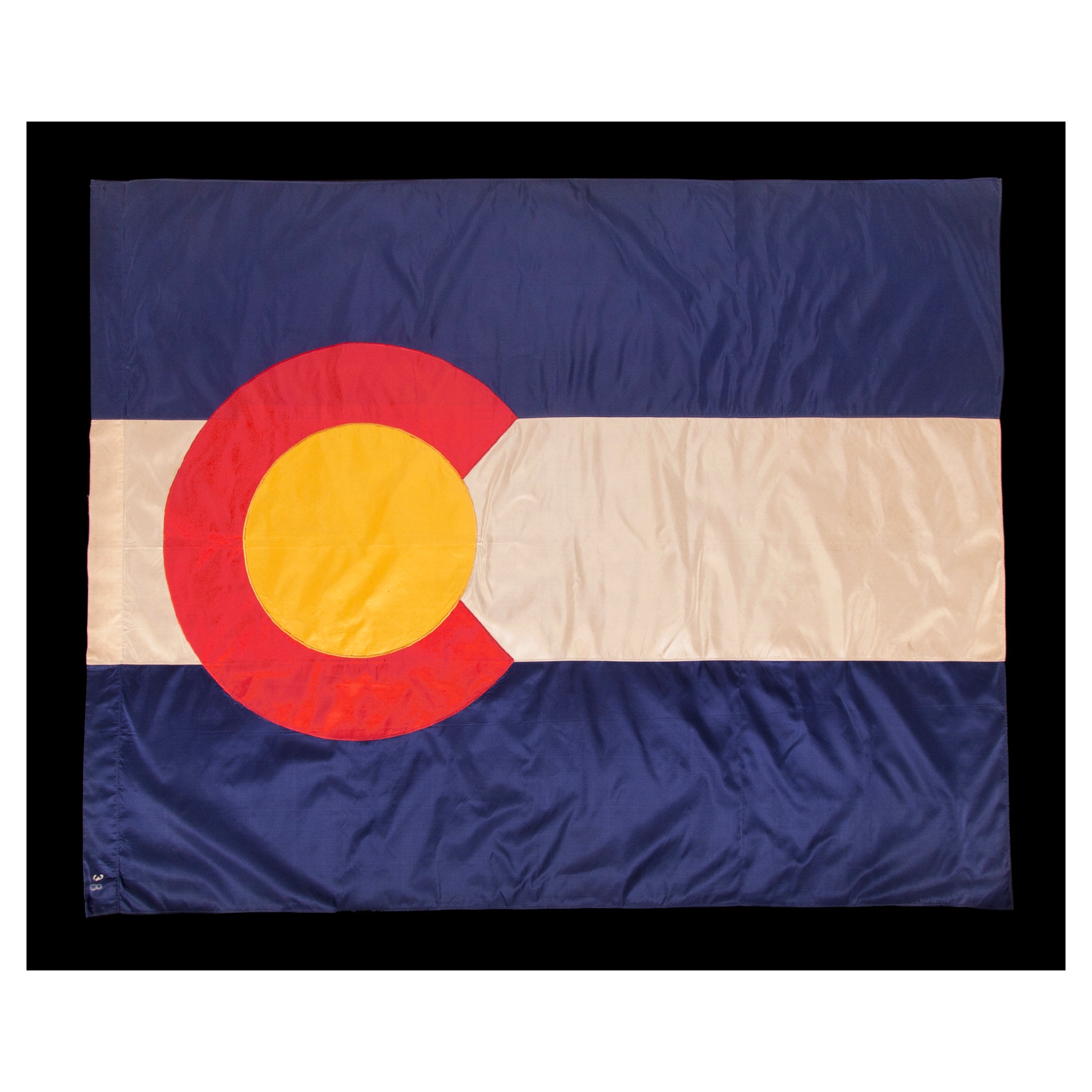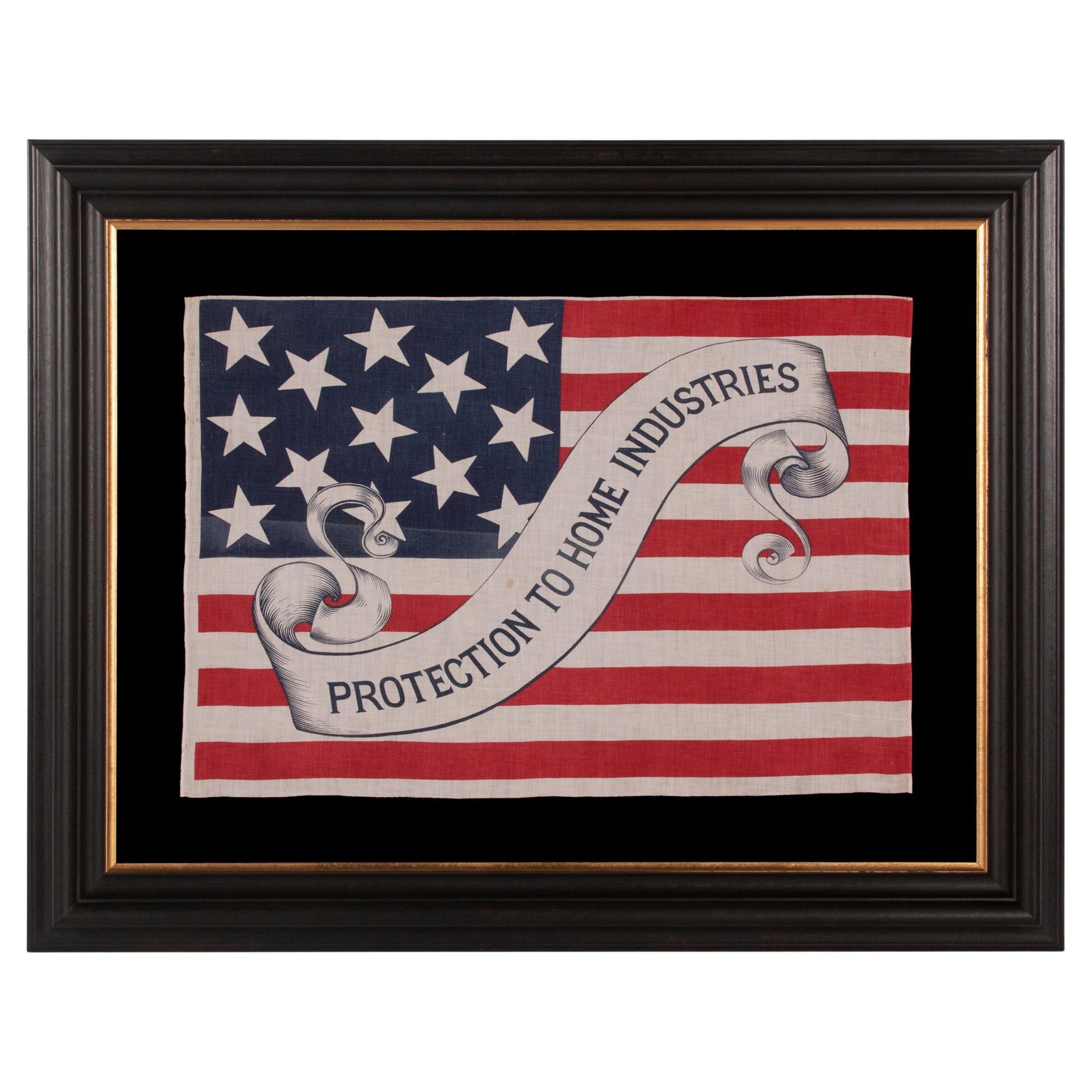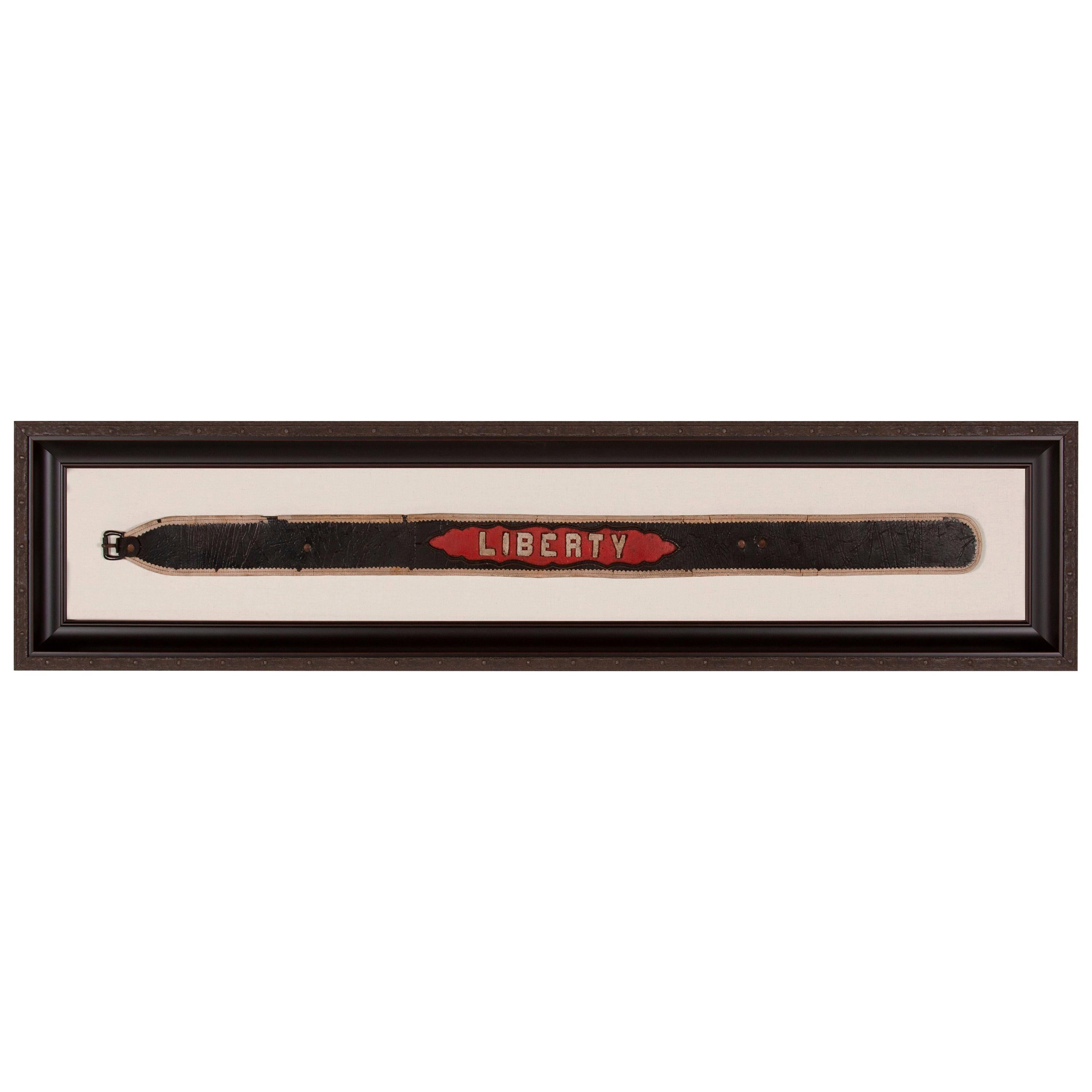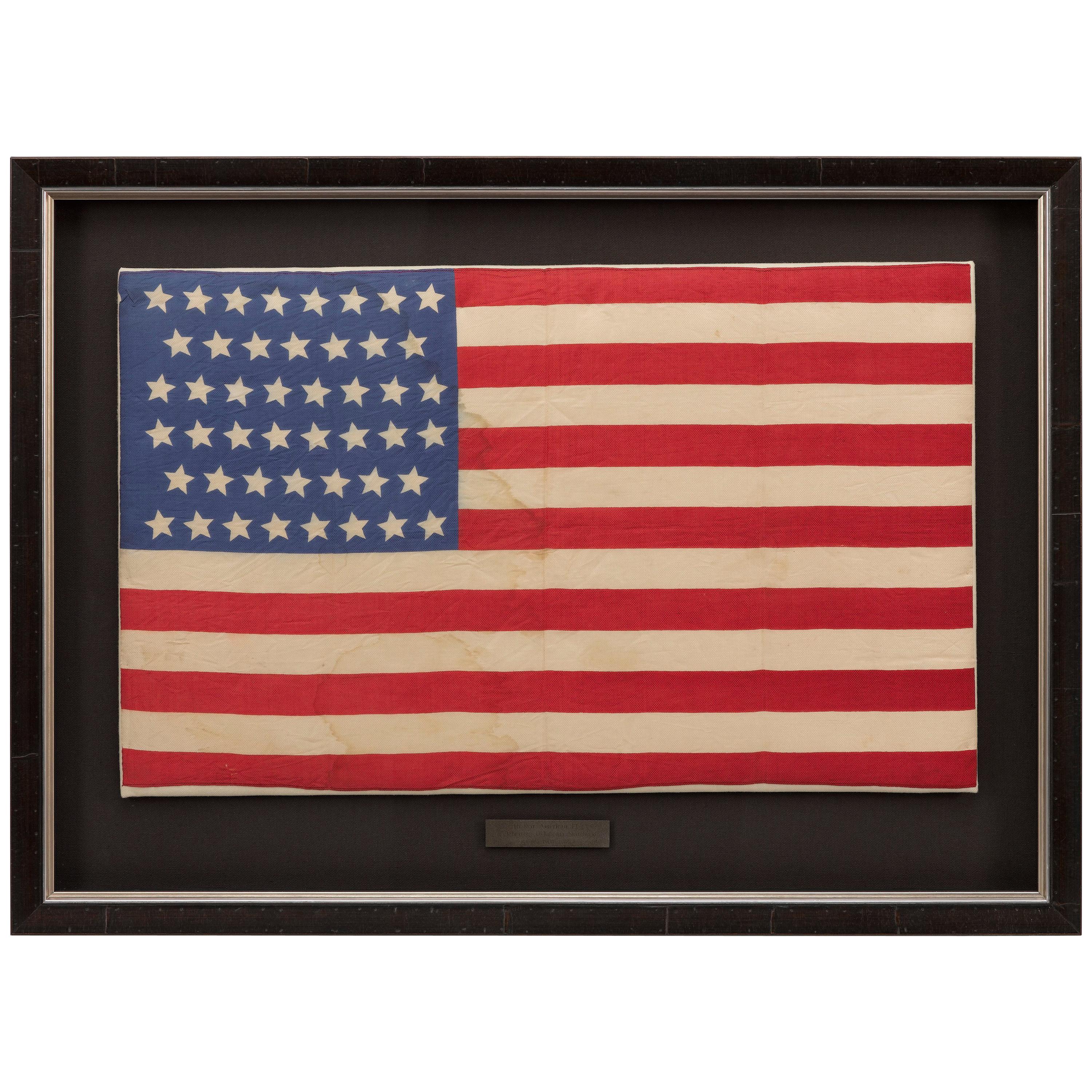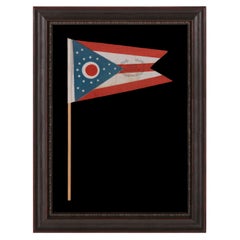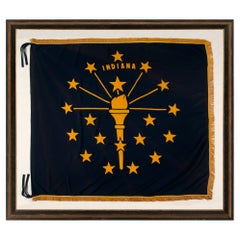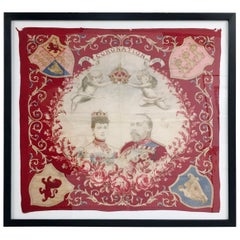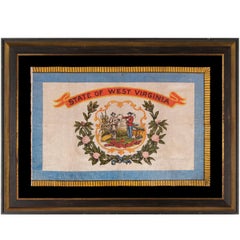
West Virginia State Parade Flag on Glazed Cotton
View Similar Items
Want more images or videos?
Request additional images or videos from the seller
1 of 5
West Virginia State Parade Flag on Glazed Cotton
About the Item
- Dimensions:Height: 36.5 in (92.71 cm)Width: 49 in (124.46 cm)Depth: 2.5 in (6.35 cm)
- Place of Origin:
- Period:
- Date of Manufacture:1929
- Condition:See Item Description.
- Seller Location:York County, PA
- Reference Number:Seller: ofj-9311stDibs: LU849711973511
About the Seller
5.0
Recognized Seller
These prestigious sellers are industry leaders and represent the highest echelon for item quality and design.
Established in 1991
1stDibs seller since 2008
61 sales on 1stDibs
Typical response time: 10 hours
More From This SellerView All
- Ohio State Parade Flag with a Civil War Veterans OverprintLocated in York County, PAOHIO STATE FLAG WITH CIVIL WAR VETERANS' OVERPRINT FROM THE GRAND ARMY OF THE REPUBLIC POST IN COLUMBUS, MADE IN MOURNING OF THE 1925 PASSING OF NATIONAL G.A.R. COMMANDER IN CHIEF DANIEL M. HALL, WHO ALSO SERVED AS COMMANDER OF THE OHIO DEPARTMENT OF THE G.A.R., AS WELL AS THE LOCAL CHAPTER Flag of the State of Ohio, printed on oilcloth-like cotton, affixed to its original wooden staff. Made for Civil War veteran's use, the flag bears a stamped overprint in the striped field that consists of an open wreath of laurel branches, inside which is the following text: “GAR [Grand Army of the Republic] Post, Dan Hall, Columbus, OH”. Born on October 20th, 1842, Daniel M. Hall enlisted with the Union Army as a Private at the age of 18 on August 25th, 1861. On October 8th of that year he mustered into the Co. H of the 2nd Ohio Cavalry. Discharged for disability on June 28th, 1862, he reenlisted approximately 17 months later, on November 11th, 1863, and mustered into Co. F of the 12th Ohio Cavalry at Camp Cleveland. He was at some point promoted to the rank of Sergeant, and, on February 21st, 1864, to the rank of Corporal. He mustered out at Nashville on November 14th, 1865. Hall mustered into the Hamlin Post of the Ohio G.A.R. on May 23rd, 1883. He would go on to serve not only as Commander of the Dept. of Ohio for the organization, but as National Commander of the entire Grand Army of the Republic. The Grand Army of the Republic was the primary veterans association for Union Civil War soldiers. Founded in 1866, its members dressed up in Civil War uniforms, attended parades and reunions, and the organization was somewhat more fraternal in nature than today’s VFW or American Foreign Legion. Flags overprinted for the purpose of advertising are a specialized form in American flag collecting. A flag with a basic G.A.R. overprint is the most common type. This might be accompanied by a post number and a date. More elaborate the overprints are more highly desired, such as this one, which is the only variation I know of that honors a particular person who was not the namesake of the chapter itself. It is of interest to note that a sister variety of 48 star parade flag is known, printed on the same fabric, that bears the same overprint, accompanied by the words: “We Mourn Our Comrade." From the additional text on the 48 star variety, one can extrapolate that the flags were made to mourn the passing of this important leader of Civil War veterans on October 19th, 1925, just one day before his 83rd birthday. The State Flag of Ohio was designed in 1901 by Cleveland architect John Eisenmann, who designed the Ohio building for the state's exhibition at the Pan American Exposition World's Fair in Buffalo, New York. It was officially adopted by the Ohio legislature on May 19th, 1902. It's elements are centered on a red disc, set against a circular white ground that forms a letter "O." This simultaneously represents a buckeye, the fruit of the state tree and an iconic Ohio symbol. The flag's 5 stripes are said to represent the state's waterways and roads, while the triangular shape of the union is said to illustrate hills and valleys. The presentation of 13 stars along the hoist end, arranged in a semi-circular medallion with two off-set stars above and below, reflects the original 13 colonies. The diamond of stars, towards the fly end. bring the overall count to 17 to reflect Ohio's admission. When the design was adopted by the state legislature, the position of these stars was changed slightly, moving them further around the circle to form a wreath. Flag expert Whitney Smith, who coined the term Vexillology in the late 1950's (the accepted term for the study of flags), pointed out that the format of the flag itself was reminiscent of Civil War cavalry guidons, carried by Ohio regiments throughout the state. These were of swallowtail form, though with 13 stripes, all horizontal and 90 degrees to the hoist. Most often these had circular star patterns around an open center, which makes them even more similar to the Ohio flag...Category
Vintage 1920s American Political and Patriotic Memorabilia
MaterialsCotton
- 38 Star Parade Flag with Whimsical 6-Pointed Stars, Colorado StatehoodLocated in York County, PA38 WHIMSICAL STARS, WITH 6-POINTED PROFILES, SIMILAR TO THE STAR OF DAVID, ON AN ANTIQUE AMERICAN FLAG OF THE CENTENNIAL ERA; A REMARKABLE SPECIMEN, ONE-OF-A-KIND AMONG KNOWN EXAMPLE...Category
Antique Late 19th Century American Political and Patriotic Memorabilia
MaterialsCotton
Price Upon Request - Indiana State Flag, with Gold Fringe ca 1930-1955Located in York County, PAIndiana State Flag With Square-like Proportions, An Offset Device, And Gold Fringe, Circa 1930-1955: Despite the fact that most of the United States joined the Union during the 18...Category
20th Century American Political and Patriotic Memorabilia
MaterialsCotton
Price Upon Request - Colorado State Flag, Made of Silk, Ca 1911-1920Located in York County, PACOLORADO STATE FLAG OF EXCEPTIONAL QUALITY, MADE OF SILK, CIRCA 1911-1920’s, EXTRAORDINARILY RARE IN THIS PERIOD AND THE EARLIEST EXAMPLE THAT I HAVE EVER ENCOUNTERED Early state flags are few and far between. While I am asked for them constantly, most states did not actually have official flags until the 20th century. On May 6th, 1911, Colorado became among the last to adopt a design. The project of doing so was spearheaded by the Denver Chapter of the Daughters of the American Revolution. The bill was introduced by Senator W.H. Sharply and adopted by the Eighteenth General Assembly. The artwork was the product of A.C. [Andrew Carlisle] Carson, President of the Ohio Society of Colorado. The meanings behind the elements in the design are as follows: The large letter "C" stands for Colorado and simultaneously for the Centennial State (Colorado entered the Union in 1876, the year in which our nation celebrated its 100th anniversary of independence), as well as the Columbine State (reflecting the state flower). The red color is included due to the fact that the word Colorado translates to scarlet or red in Spanish. The circle represents the sun, while the gold color symbolizes all-the-year sunshine, Colorado’s status as the greatest gold state, and one Columbine color. It was also included so that the Colorado state flag would have one more color than the U.S. flag. The color white reflects Colorado’s status as the greatest silver state, its eternal mountain snow, and one Columbine color. Lastly, the shade of Yale blue symbolizes all-the-year blue sky and one Columbine Color. Members of the D.A.R. were proud to note that this was also their color. Made sometime between the initial year of the adoption of this design and the 1920’s, this particular flag is the earliest Colorado example that I have ever encountered. The blue and white bars, red “C,” and golden circle are a’’ made of silk taffeta. This was a costly fabric, reserved for the best material a flag-maker produced. The flag is constructed in the manner of a battle flag, to be carried on foot. Squarish in its overall profile, silk was the fabric of choice for flags employed in this function, due to the fact that it was light weight, and thus practical for hand-carrying, while simultaneously formal in appearance, appropriate for the sort of ceremonial use that military presentation often demands. The style of the hoist is also typical for field or parade use. Here the fabric was rolled over to form an open sleeve, through which a wooden staff could be inserted. The sleeve is lined on the interior with black cotton. Leather tabs, at the top and bottom, fit over metal posts on the staff, designed to accept them, to fix the flag in its proper position. The bars were pieced and joined with lineal machine stitching. The hoist and fly ends were finished and hemmed by the same method. The devices are double-appliquéd (applied to both sides) with a machine buttonhole / blanket stitch. Though machines that produced buttonholes were, remarkably, available alongside the earliest standard machines, in the 1850’s and 60’s, the use of this sort of stitch in a running format, for appliqué work, remained highly unusual, even as late as the first half of the twentieth century, probably because it used a ton of thread when compared to the zigzag or satin stitch. It could be expected to appear more often in the hands of a maker of very fine flags, that employed embroidery machines and commissioned custom, fancy work of all sorts. Though unsigned—in no way uncommon in early examples, which were seldom signed—that is precisely the sort of firm that produced the Colorado flag...Category
Early 20th Century American Political and Patriotic Memorabilia
MaterialsSilk
Price Upon Request - 13 Star American Parade Flag with Rare Design, Ca 1888 Ex Richard PierceLocated in York County, PA13 Star American parade flag in an extremely rare design, with “protection to home industries” slogan on a fanciful, scrolling streamer, made for the 1888 presidential campaign of Benjamin Harrison; formerly in the collection of Richard pierce. 1888 Benjamin Harrison campaign flag, printed on cotton, with 13 large stars in a 3-2-3-2-3 pattern, upon which a whimsical, scrolling streamer is superimposed that features the slogan: “Protection to Home Industries.” There are numerous styles of both documented and undocumented, red, white, and blue bandanas and handkerchiefs, made for Harrison’s campaign in this year, as well as from the subsequent one, in 1892. Most bear variations of text to support the “Protection for American Industries” platform of the Republican Party. America was in the midst of the industrial age and there was a great deal of public interest, both in protecting growth and discouraging both imported goods and immigration. The constant stream of immigrants posed great challenges for a working families, competing for scarce jobs, in work environments that were already often far from ideal. In post-Civil War America, many of the working men were Civil War veterans. Bandanas abound from Harrison’s Campaigns, but flags do not. This example, along with three others, were once part of an 1888 patriotic quilt that was disassembled by a dealer and sold piecemeal to collectors. I eventually acquired all four. Fifteen to twenty years ago, these were the only four known copies. A couple of others have since surfaced, but the total count known still stands closer to 5 than 10. The use of 13 stars is seen in the flags of various candidates in the 19th century. Among these are Abraham Lincoln (1860 campaign), Henry Clay (1844 campaign), John Fremont (1856), and Benjamin Harrison’s grandfather, William Henry Harrison...Category
Antique 1880s American Political and Patriotic Memorabilia
MaterialsCotton
Price Upon Request - Leather Fireman's Parade BeltLocated in York County, PALeather fireman's parade belt with the word "LIBERTY in white on a red ground, Bloomsburg, Pennsylvania, circa 1900 This fireman's parade belt is of the type produced during the latter part of the 19th century, between roughly 1870 and 1900. Made of leather, the body of the belt is black. In the center is a recessed window, with a fancifully scalloped edge, behind which a red leather panel, upon which the word "Liberty" appears in raised, white letters. There is a white binding, it's edge trimmed with pinking shears to create a decorative border. The metal buckle fits into an opposing leather strap, small in scale and riveted beneath the outer one. The words that appear on fireman's parade belts were customized, sometimes displaying the title of the wearer (i.e., "chief" or "clerk"), sometimes the name of the city or town, and sometimes the name of the station, as-is the case in this instance. Attributed to Bloomsburg, Pennsylvania (Columbia County), I acquired it about 25 miles southwest, in adjacent Union County. Bloomsburg's first fire house, Friendship Fire Company, was established in 1868, shortly following the Civil War. Like most volunteer departments of that time, it was staffed by returning Union soldiers who volunteered, enjoying the comradery. Three more would follow, including Rescue Hose & Ladder (1870), Winona (1881), and Liberty Fire Company (1900). In the early 1990's the process was begun to modernize and consolidate all four stations into one. Liberty's fire house still stands on the 100 block of Leonard Street. Probably made in the year the Liberty Fire Company was established, for related parades and festivities, the great thing about this belt is the combination of the wonderful, early, painted surface and the terrific verbiage. While words such as "Clerk," "Bloomsburg," or "Rescue" would have limited appeal, the word "Liberty" opens the playing field to a nation-wide audience. Fire memorabilia...Category
Antique Early 1900s American Political and Patriotic Memorabilia
MaterialsLeather
You May Also Like
- 46-Star American Flag, Antique Printed on Silk, Early 20th CenturyLocated in Colorado Springs, COThis is an original 46-star American parade flag, printed on silk. Each star represents a state in the Union at the time. The official flag design would update every July 4th, to inc...Category
Antique Early 1900s American Political and Patriotic Memorabilia
MaterialsSilk
- 46-Star American Flag Printed in Drum Star ConfigurationLocated in Colorado Springs, COThis is an original 46-Star American parade flag, celebrating Oklahoma statehood. Each star on the flag's canton represents a state in the Union at the time. The official flag design would update every July 4th, to include any new states added to the Union in the past year. Oklahoma, the 46th state, entered the Union on November 16, 1907. As such, this 46–star flag was the official flag of the United States from July 4, 1908, until July 4, 1912. The silk flag has a dark blue canton with 46 white printed stars. The stars are printed in an 7-8-8-8-8-7 row configuration, or “Drum design.” The flag design is completed with 13 alternating red and white stripes, each stripe representing one of the original thirteen colonies. The land that comprises Oklahoma today was added to the United States as part of the Louisiana Purchase of 1803. Throughout the 19th century, the U.S. government relocated Indian tribes from the southeastern United States to the area, and by 1900, over 30 Indian tribes had been moved to what was originally called the Indian Territories. At the same time, ranchers in Texas began to move into the area in search of new pasture lands. Although stipulations in the Indian Relocation Act agreed that the land would forever be Indian Territory, the promise of fertile farmland trumped the government’s promise of sovereignty. On April 22, 1889, they opened the land to settlement by homesteaders, creating a land run in which settlers, called “Boomers,” were allowed to cross the Texas or Arkansas border at a particular hour to claim homesteads. Settlers who illegally crossed the border earlier to stake prime land were called “sooners,” which eventually became the state’s nickname. Wagons and the Santa Fe railroad carried cartloads of men and women to blank town sites and building plots, creating ten thousand-people communities in a matter of days. The following year, the region was further divided into Indian Territory and Oklahoma Territory...Category
Vintage 1910s American Political and Patriotic Memorabilia
MaterialsSilk
- King Edward VII Coronation, June 1902 Framed Red FlagLocated in Hastings, GBKing Edward VII coronation, June 1902 framed scarf / flag. This scarf is an original antique piece of British history and patriotic memorabilia. ...Category
Antique Early 1900s British Edwardian Political and Patriotic Memorabilia
MaterialsCotton
- 31-Star Printed American Flag, Celebrating California Statehood, Circa 1850Located in Colorado Springs, COThis is a rare 31-star medallion printed American flag, celebrating the addition of California to the Union. The flag is printed on silk and has a spectacular “Great Star” canton pat...Category
Antique 1850s American Political and Patriotic Memorabilia
MaterialsSilk
- 39-Star Antique American Flag with 'Whimsical' Star Pattern, 1889Located in Colorado Springs, COThis is a 39-star unofficial American flag, handmade and printed on cotton. The flag dates to 1889 and has a unique history, thanks to its rare star-count. The flag’s canton is prin...Category
Antique 1880s American Political and Patriotic Memorabilia
MaterialsCotton
- 38-Star Antique American Flag with Unique Canton, circa 1876-1890Located in Colorado Springs, COThis is a striking 38-star American flag. The flag dates to 1876-1890, when Colorado (represented by the large star in the center of the flag’s canton) joined the Union as the 38th s...Category
Antique Late 19th Century American Political and Patriotic Memorabilia
MaterialsMuslin
Recently Viewed
View AllMore Ways To Browse
St Louis Chrome
Fire Axe
50 Star Flag
Mens Louis V
Battle Of Gettysburg
World War 2 American Flag
Cloth Banner
50 Star American Flag
Pick Axe
Used Pick Axe
Parade Shield
Crate Barrel Aspect
Mens Gold Medallion
Vintage British Bunting
Vintage Metal Statue Of Liberty
Antique Chinese Embroidered Boots
Baton Rouge Dealer
Civil War Drum
